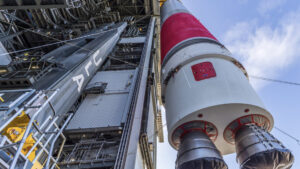The sixth flight of SpaceX’s giant Starship rocket, set for takeoff on Tuesday from South Texas, will test the vehicle’s limits in new ways.
Most importantly, SpaceX will attempt to briefly reignite one of Starship’s six Raptor engines in space. SpaceX tried this on Starship’s third launch in March but aborted the engine restart after the rocket lost roll control during the flight’s coast phase.
A successful engine relight demonstration would pave the way for future Starships to ascend into stable, sustainable orbits. It’s essential to test the Raptor engine’s ability to reignite in space for a deorbit burn to steer Starship out of orbit toward an atmospheric reentry.
On Tuesday’s test flight, Starship will follow the same suborbital trajectory as the rocket’s previous mission on October 13. This means Starship’s Raptor engines will accelerate the vehicle to a velocity just shy of the speed required to reach low-Earth orbit. Without any more maneuvers, gravity will naturally pull the rocket back into the atmosphere over the Indian Ocean for a controlled splashdown in the open sea.
This arcing suborbital trajectory provides a backstop of sorts to bring Starship to a remote location in the ocean, even if there’s a problem with reigniting the Raptor engine.
The second change SpaceX will introduce on this test flight involves the vehicle’s heat shield. These modifications will allow engineers to gather data before future attempts to return Starship to land at SpaceX’s Starbase launch site in South Texas.
Perhaps as soon as next year, SpaceX wants to bring Starship back to Starbase to be caught by mechanical arms on the launch tower, similar to the way the company recovered the rocket’s Super Heavy booster for the first time last month. Eventually, SpaceX aims to rapidly reuse Super Heavy boosters and Starships.
“The flight test will assess new secondary thermal protection materials and will have entire sections of heat shield tiles removed on either side of the ship in locations being studied for catch-enabling hardware on future vehicles,” SpaceX wrote on its mission overview page.
